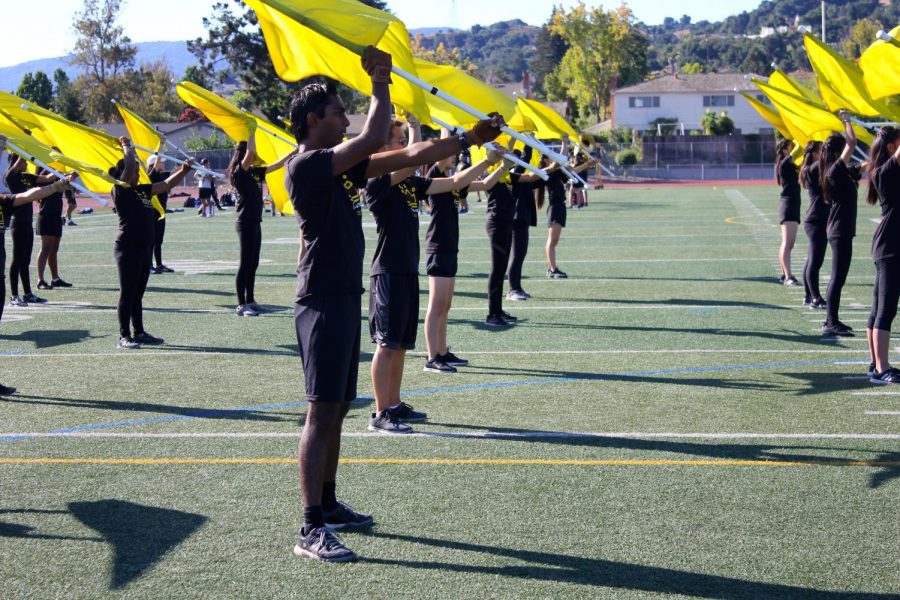Rookie seniors in Color Guard
Exploring the stories behind students who chose to start Color Guard as seniors
September 22, 2019
From challenging stereotypes and bursting out of their personal bubbles to finding a new supportive family, seniors Karesa Hui, David Hui and Muhil Mylvaganan accomplished what many other seniors would shy away from — starting their last year of high school as first years in an after school team, Color Guard.
To better balance time between writing college applications, completing homework, studying for tests and Color Guard, all three seniors sacrificed an extracurricular to dedicate time to the team. For Karesa and David, it was quitting badminton, a sport the twins dedicated six years towards.
Mylvaganan also shares Karesa and David’s experience — for him, it was reducing his violin practicing time and putting down his mellophone. Mylvaganan also reveals that in order to switch from playing instruments to dancing, he dedicated his summer to practices. However, his first impression of Color Guard did not quite parallel with his current love and passion for the team.
The first time Mylvaganan was introduced to Color Guard his freshman year, there was only one member who identified as male among 39 people. This contrast in Color Guard’s male to female ratio was not only one of the aspects that struck him as “weird,” but also the reason that caused his parents, who have declined to comment on this topic, to discourage him from joining initially.
After making a deal of keeping up his grades and receiving a satisfactory SAT score, his parents eventually agreed to let Mylvaganan join Color Guard. Now a member of the extracurricular, Mylvaganan realizes that his parents’ assumptions of the activity being feminine may not be so true.
Karesa echoes Mylvaganan’s experience with having to fight the stereotype of dancing. According to Karesa, her parents disapproved of her spending more time participating in a stereotypically-female sport — they would rather see her playing in a less feminine sports such as badminton, because they believed that “girl sports have the stereotype as [appearing to be] weak and looking pretty.” However, their father comments that while he observes the higher female to male ratio, he doesn’t believe that Color Guard is a feminine sport.
Due to the lack of parental support for their interest in Color Guard, Karesa and David not only had to overcome stereotypes, but also the challenge of supporting themselves financially in the program. In order to support themselves, David chose to work as a lifeguard during the
According to David, going the extra mile to support themselves financially allowed him to truly find a family who are willing to support him even if he is new to dancing and Color Guard.
While she agrees with how David found a new supportive group in Color Guard, Karesa also found confidence in not only her dance expressions, but also in her physical appearance and personality. Prior to joining Color Guard, she was an introverted, photo-shy student. However, because the team has already participated in several performances as of this year, she began to see change in her self confidence.
In the end, joining Color Guard taught David, Karesa and Mylvaganan to not be dissuaded by stereotypes and the popular norm to explore unfamiliar activities and experiences.

















